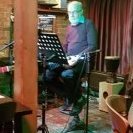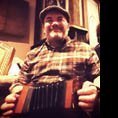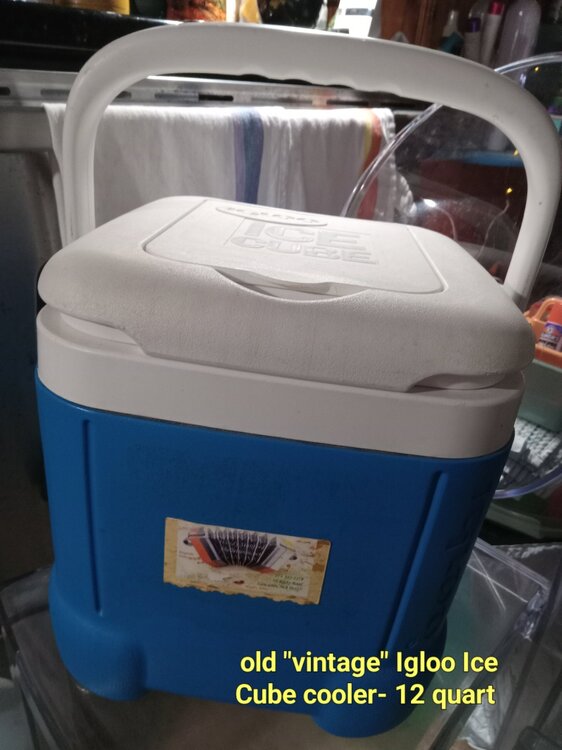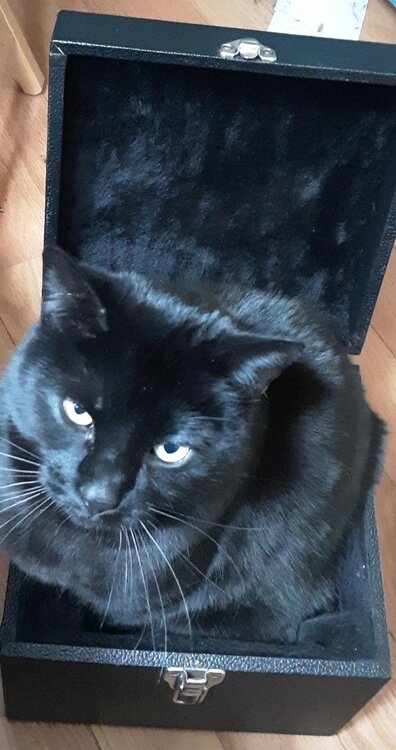-
Posts
1,442 -
Joined
-
Last visited
Contact Methods
-
Website URL
http://fitsofpatchin.com
-
ICQ
0
Profile Information
-
Gender
Female
-
Location
Massachusetts, USA
Recent Profile Visitors
bellowbelle's Achievements

Heavyweight Boxer (5/6)
-
bellowbelle started following Strange music! , Playing Gypsy Jazz On The Ec , Do you play other instruments? and 5 others
-

Playing Gypsy Jazz On The Ec
bellowbelle replied to Randy Stein's topic in General Concertina Discussion
So... happened to get directed to this post again while Google searching something. I never did use Django Fake Book much with my English concertina -- just not the type of thing for it -- but I've recently picked up an accordion again (got 2 small-sized 120 bass old piano accordions, an Iorio Candido and a Scandalli) and this collection will be perfect to play. -

Do you play other instruments?
bellowbelle replied to Greg Mirken's topic in General Concertina Discussion
Hi again, yesterday I saw an email notice about a new post in this thread, with a question for me, but now it's gone, deleted maybe. I'll try to answer it anyway. "...curious...what music is all/only in Bb or A..." (re my previous post). Well, in THIS case, we're playing old-time Baptist-type hymns from the hymnbook used in the church where my dad was formerly the pastor. (I was older when he chose that so I didn't really grow up being PK, a preacher's kid.) It's actually been a great lesson for me, since I'd wanted to work on sightreading music (played mostly by ear as a kid). I went through the hymnbook and found everything in the key of A. There was actually more in the key of Ab, but it turns out that it's easy to stare at those black dots and just shift it all to the key of A, as long as I remember what notes to play as sharps. So, good. Then, more good news, I found that I can easily play all the songs from the key of D collection -- but they will be played and heard in the key of A -- simply by "bumping up" my fingers' location to the concertina buttons one-up from the actual written/given key of D. So, in other words, I can stare at music that's in the key of D, still sightreading, but actually be playing in the key of A. All that is the same for Bb, too, so I was able to play all the Eb stuff "one up" in Bb. Since my main concertina is a Geordie baritone, this discovery was great, because although I love the deeper baritone sound, sometimes it can seem muddy -- so bumping it all up by a 5th -- like D up to A -- makes it higher. My husband (has emphysema, etc) plays his harmonicas. I can't say we are all that great but there's no one around to tell us about it, lol. -

Do you play other instruments?
bellowbelle replied to Greg Mirken's topic in General Concertina Discussion
Piano accordion, again. I'd quit that years ago and only played my English concertinas (and foot bass). But after playing every day, now that we are faced with daily keeping my elderly father busy and healthy, I noticed my EC sounds a little tired. And the foot bass has a broken reed, again, so I only play it in two keys (A and Bb) so I don't need to play that broken G. So.... Got a cute compact 120-bass PA on ebay recently, an Iorio Candido. It's not too bad, for what it cost, and had I only found a nice compact one like this years ago, I probably wouldn't have quit. So now I can play away, loudly, and not worry about wearing out my EC, which I still play, but not for the daily do! -

How did you, discover this Concertina.net?
bellowbelle replied to SIMON GABRIELOW's topic in General Concertina Discussion
I was here way back around 2001 or 2, I think, when I had just bought a concertina. I can't remember if I found the site by searching or if someone at The Button Box told me about it. I participated more back then, haven't visited as much in recent years, but lately I've enjoyed popping in. -

How did you find your way to concertina?
bellowbelle replied to Capitanya's topic in General Concertina Discussion
Hmm...let's see...it was about 23ish years ago. I was no longer able to press fingers on guitar strings, had given that up already, and my 180-bass piano accordion (an auction deal) was WAY too huge for a short person (me). I remember saying to my then employer that I had to go to Amherst in western Massachusetts...must have been bringing my daughter out to the college I guess. My boss(es) said they liked to go to The Button Box if they went to Amherst. (Not sure if they played an instrument, or what.) So I checked out that store, in search of a smaller and better accordion. But...concertinas! Wait! I saw them, and almost instantaneously it was Goodbye, piano accordion. I bought a Morse Albion English, and later a baritone (and a few others). Later, I did get a new piano accordion, but I eventually sold it, and I prefer playing the concertina. -

That's an interesting icon on your profile
bellowbelle replied to SIMON GABRIELOW's topic in General Concertina Discussion
That's my concertina case (that the cat is in), though since this photo I have put that one in storage and I now use -- don't laugh -- Igloo Ice Cube coolers for concertina cases. They are easier to manage in several ways. They cost less than any concertina case I've seen, too. But only the original, old, vintage Ice Cube coolers will work. The new Igloos (a brand, not sure if it's international) have different dimensions. So I had to get a couple from ebay. (Still cost less than a real case.) I add a tiny blanket scrap to it, and so on, to set the EC on. -

That's an interesting icon on your profile
bellowbelle replied to SIMON GABRIELOW's topic in General Concertina Discussion
-

That's an interesting icon on your profile
bellowbelle replied to SIMON GABRIELOW's topic in General Concertina Discussion
Mine is an edited photo clip from a video where I am playing my concertina and singing and my daughter's cat joined in. -
Are there any collections (or even rare instances) of written tunes or arrangements that include the tune notation in two separate octaves? Like, 'normal' and also the octave above. I play the English concertina and sometimes the written music is low, so I want a (same key) higher version as well. Yes, I can play by ear, and I often do, but sight-reading is just a different, other option. Could change the key, yes, but no…not if I'm sight-reading. I could play the written notes 8va, yes, sort of…but I'd rather actually be seeing the higher octave notation. At least while still learning a song. So I am transcribing some things, using ABC (ZapsABC). Good exercise, not bad to do. But if there's already stuff out there…where?
-
I first played by ear, then gradually learned to read music to the point that I can sightread enough. Two different processes for sure. So, when trying to learn a tune I use both ways together. I fumble along through the dots on a page, usually taped to my cupboard right in front of my chair. And, along with that, I create or download a primitive file like an easy midi (.mid) to listen to every now and then throughout the day. I keep the midi on my phone's homescreen, and delete it once I've got the tune in my head. BUT -- that said -- one other really helpful thing (in my opinion) is to determine the chord progression of the song you want to get into your memory. If that's an option....because I know not everyone wants to bother with chords. Create a simple lead sheet and indicate where the chord changes are, above the measures. Don't need to write out all the notes...just need to know where the chord changes are. (A song like Hark The Herald Angels has a chord progression, though it's true that some traditional tunes don't really have "chords." ) When I was learning to play the accordion as a child (never got very pro), my teacher did not really read music and we used simple lead sheets all the time. Just the measures with a time signature, the slashes indicating beats in the measures, and the chord symbols above the measures. The tune was mainly just in my head. It was helpful to see that melodies usually had simple chord structures and repetitions.
-

Write words to help learn tune?
bellowbelle replied to bellowbelle's topic in General Concertina Discussion
So my sad words, set to "Sad Is My Fate," are: Oh-- cold is the night and lonely And- cold- is the war Every road that I follow only Ends where I was lost before Where are you, where do you wander without me, my love, my- own? We will never walk together a--gain I am so weary, I can't go on all a-lone any longer Cold is the night and- Sad, so very sad, is my fate. (...really, I'm not this sad, for the record. Just a way to learn a tune!) And here's my verse for "The Fairies' Hornpipe" -- If I don't drink some coffee in the morning I am such a mess What's in front of me and moving, well now, I can only guess I will poke you in the eye I will surely make you cry If my morning cup of coffee Is a cup that's dry -

Write words to help learn tune?
bellowbelle replied to bellowbelle's topic in General Concertina Discussion
That sums up part of my day today, and how I felt about it! I did go back to bed. Though, we've been in a drought so I won't complain too much about the rain. -
Just the other night, two bullfrogs (or something) singing, would have joined in with my concertina but then they probably would have quit. I have a large wind chime near a door, and I'll never forget the time (years ago, now) when, as I stood quietly and unlocked the door to go in, it very mysteriously and perfectly played the first phrase of "Jingle Bells." That was fun but kind of creepy....ha ha
-

Write words to help learn tune?
bellowbelle replied to bellowbelle's topic in General Concertina Discussion
So anyway, the tune "Sad Is My Fate" is one I found on thesession dot org. It's also known as Is Bronac Mo Cineamuin. I tried to add an image but that didn't work... later -

Write words to help learn tune?
bellowbelle replied to bellowbelle's topic in General Concertina Discussion
I wonder how many are the same as what I'd know from my own church history. Many of the tunes in the Baptist hymnals had Scottish or Irish origins. (And after singing them every week for years, I couldn't forget them if I tried!) I recently got a Robert Burns songbook and another Scottish one. And some Jean Redpath CDs with her singing some, so I can play along. This all has led me to study Scottish Gaelic with Duolingo (though, Burns did not use Gaelic, but Scots-English I guess it'd be called).





.thumb.jpg.1dbd070a20a706d274d41ffeb11688ea.jpg)





